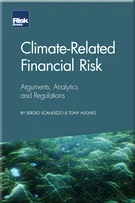Early applications of machine learning
Preface
Introduction: human-machine entanglement
Machine learning: origins
Useful tools
Decision trees
Introduction to neural networks
Back-propagation
Regularisation
Optimisation
Building neural networks
Early applications of machine learning
Interpreting neural network decisions
Predicting corporate bond returns
Deep learning networks
Applications of deep learning networks
Machine intelligence
Consciousness
The future and its challenges
Artificial intelligence and the military
Final thoughts
Appendix
Epilogue
Acknowledgements
Neural network practitioners face numerous criticisms. Many of these have proven unfounded and most are possible to overcome. Nevertheless, these criticisms have contributed, at least in part, to the slow adoption of machine learning applications in banking and finance in particular.
A common criticism is that neural networks require large amounts of data for accurate predictions. This is true, as there are more parameters (ie, weights) to determine. However, neural networks can capture complex relationships between input variables, and data is necessary to reveal these. Furthermore, the availability of larger data sets has become common in recent years and will continue to increase, thereby necessitating techniques designed to make use of that information.
Neural networks are also criticised for being computationally intensive and difficult to implement. There is some validity to this in that greater computing power is required as data sets become large, but technology has advanced rapidly (with the invention of, for example, graphics processing cards and quantum computing). Given such advances in technology and the availability of large data sets, machine learning methods continue
Copyright Infopro Digital Limited. All rights reserved.
As outlined in our terms and conditions, https://www.infopro-digital.com/terms-and-conditions/subscriptions/ (point 2.4), printing is limited to a single copy.
If you would like to purchase additional rights please email info@risk.net
Copyright Infopro Digital Limited. All rights reserved.
You may share this content using our article tools. As outlined in our terms and conditions, https://www.infopro-digital.com/terms-and-conditions/subscriptions/ (clause 2.4), an Authorised User may only make one copy of the materials for their own personal use. You must also comply with the restrictions in clause 2.5.
If you would like to purchase additional rights please email info@risk.net










